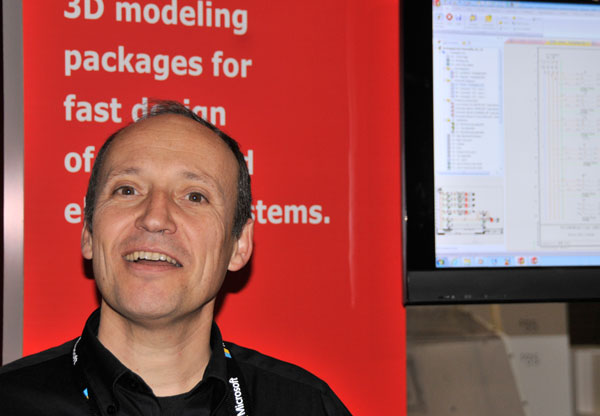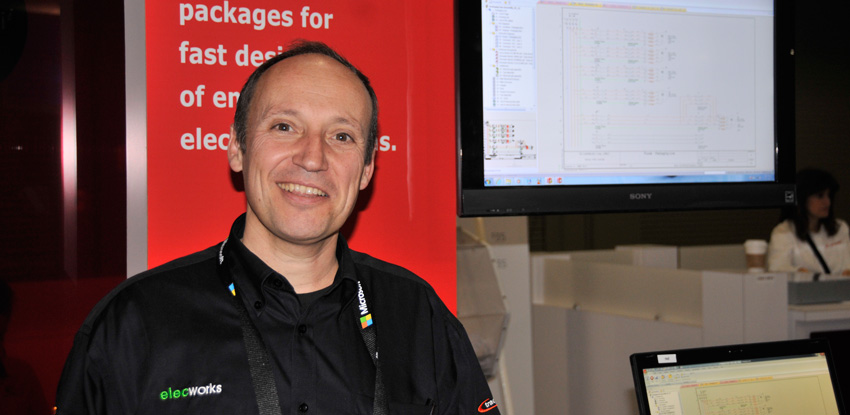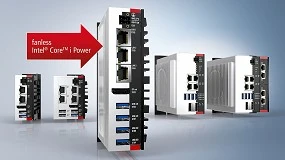Interview to Pedro Puig, director of Trace Software International
Who is Pedro Puig? What is SolidWorks Electrical? What is elecworks?
Am an employer that 25 years ago mounted a company to develop a solution software of CAD electrical to world-wide level, with the aim to be the leader in this speciality. From here and after a long route, arose two products, that call now elecworks and SolidWorks Electrical. This last is a version graduate of the first, that in these moments commercialises in exclusive SolidWorks to world-wide level. Both sound solve for the electrical engineering, for automation and engineering of detail.

How it achieves that a software developed in Spain, country that does not stand out in this field, was leading in the world-wide field?
Like the majority that still hold us in this mundillo, of entrance, with vocation entirely international from the first day. Which wants to say work with multiple languages, multiple normative, multiple standards, from the start, with all the implications that this comports: quality, knowledge of the market and the technician to global level, know well to the competition and go a go past of them. It is necessary to be very open and be very very informed, know well to the users of different countries, for afterwards be very agile to add all that that you think that can add value. And never think that, by the fact to having had good results during some time, always go to be followed being equal. In 25 years, logically, have had some thumps.
Somebody that begins a company of software in countries like Germany or United States, with internal markets very powerful, has had it easier that you?
Definitely, sure. In fact, ours main competition has followed a reverse way to the ours: they began very strong in his countries of origin, United States, Germany, France, … and when they were consolidated in the same, went out to the foreigner in some a lot better conditions that ours. We, as we already knew that we could not live only of the Spanish market, had to begin with investments stronger, and be international from the beginning, with multiple languages and commercialising in multiple countries. Besides, the politics of innovation and the helps that offer (or, at least, offered) these countries were a lot of better that the ones of Spain, at least until 10 years ago.
You have received some help or recognition?
Elecworks Went out to the market the year 2009. We present it here [in Orlando, EE UU], during SolidWorks World 2009. We present us to a European prize of innovation, by the fact to be the first in relating the electrical diagrams 2D with the components 3D of SolidWorks of bisteeringal form. We were awarded the 2011.
Why SolidWorks chose them to you and no to his competition?
We position us directly with the idea that this occurred. In the year 2003 —when we had to reinventarnos by enésima time, when our product [Electrical Designer] that worked on another editor (AutoCAD) was displaced by AutoCAD Electrical, that was not ours— decide that we needed a strong partner of world-wide level. And we choose to invest our knowledge and innovar, happening us to the 3D, choosing SolidWorks. And we develop the product during more than five years, during which asked us in some occasion “… and if somebody more has had the same idea”

In which point of the conversion of the product elecworks in SolidWorks Electrical find us?
The process has been much faster of what thought, especially taking into account the size of SolidWorks. We sign a confidential agreement in April of the 2012, from the cual had to do a new product, with a new ‘branding', develop a plan of business. It did in four months. The first of August the product was finishing, and announced in this moment. The deployment began in North America and the Zone Euro. All this, with a very clear-cut planning, in which we participate with four engineers that afterwards were six to achieve a fast and efficient deployment inside his network. The aims [economic] during the 2012 have covered with grow. Still there are not official data, but think that, probably, have triplicado. The perspectives have surprised very positively to SolidWorks, and to us has left us clear that they are very good, and that the market exists, that is the most important.
How it will affect them like company the fact to be the ‘partner' of SolidWorks?
Ours company has, in addition to the software of design, another software for calculation of electrical installations. Before the agreement with SolidWorks, represented roughly 50% of our activity.
From the first serious conversation (June 2011) until the signature of the agreement, already had changed a lot. In these moments are orienting us in such a way that the products no graduates to SolidWorks (like the 2D) do not compete with his channel, but they are complementary. The strengths of sales, marketing, in the different countries are being reoriented.
In addition to calculation of installations and of elecworks (2D) what other products has?
Have still some historical products, as
It thinks that will have some sense integrate a solution of this style, that help to choose the optimum components in an electrical circuit, in a ‘SolidWorks Electrical Plus'?
Are seeing everywhere that every time there is more hybridisation and integration of technologies. The part of calculation, although it was more specific, will finish integrated cheese cheese of a form or another with the most conceptual design, perhaps also with simulation.
SolidWorks Electrical, could apply to wire up buildings?
Himself. Originally it is not conceived for this, but is one of the applications that can him give. Have customers that manufacture elevators, for example, that use it, and can see the wired up of the elevator inside the building.
Yesterday we saw in SolidWorks World a pincelada of SolidWorks Mechanical Conceptual Has some sense a ‘Electrical Conceptual'?
In fact, when I saw it remembered me a lot to one of the contributions of elecworks: the diagram sinóptico (unifilar). You paint diagrams of blocks, throw lines between them: you are doing conceptualización, that afterwards use when you go in in the engineering of detail. Six years ago already we develop it. Unlike the mechanical concept, what does not have too felt is to create it like independent product, because usually the one who does the diagram of blocks, also does the rest.
The electrical engineering is entirely tied to the one of control, that each day has more programmable elements, and less standardisation of the desirable. Some idea on how tie the programmable, and the programmed, with the rest?
For the moment remain us with an exchange of data. If I know that have a determinate automaton data (was Allen Bradley, a Telemecanique or a Siemens...) That works with some determinate signals of And/S, for the moment can exchange these with the electrical diagram in both senses.
After achieving that SolidWorks chose to Trace Software, probably tengán the feeling that a good part of the work already is done. And afterwards... What?
By a minute think that we had achieved to advance a lot. And it has been an important milestone. In the minute two darse that it involved much more work of the that had imagined. For one of the products, have now an alone customer, but is very big, and is very demanding. The customer has a culture to which have to adapt us. And this demands an effort that had not calibrated to 100%.
Although really they do not put it at all difficult. Have a very open culture, very colaborativa, and never do you feel the obvious difference of size. No only it is simple to use his software, is simple, easy, work with them.






